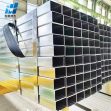How to look at the functional features of solar greenhouse in farming
Solar greenhouse is an important innovation in protected cultivation history, which has many advantages in that they save energy, reduce pollution, and improve economic and social development. Presently, solar greenhouses are used for producing a continuous supply of fruits and vegetables for winter and spring markets. In recent years, a wider range of products, including edible fungi, flowers (potted and cut flowers), and various kinds of fruits have been grown in solar greenhouses. Furthermore, in the same region and under the same production system, solar greenhouses are significantly better in productivity efficiency and the ratio of input/output than the heated greenhouse.

Generally speaking, sunlight provides the sole source of light and heat in the solar greenhouse. The degree of exposure to the sun determines the light conditions inside the greenhouse, which varies according to the season, latitude, greenhouse structure, the aging of plastic film, and the duration of the sunshine. For example, under the influence of the uneven light distribution, the room temperature inside the solar greenhouse is not uniform either. During the day, the air temperature is usually higher at the upper level than at the lower level, and the middle of the greenhouse temperature is higher than at the edges. At night, the front roof loses heat faster than the back wall, creating a warmer area on the north side than the south side of the greenhouse. The horizontal temperature variation inside the greenhouse is about 3 to 4 °C, and the vertical gradient is 2 to 3 °C. In most cases, small greenhouses tend to have more areas with low temperature and more unevenness in terms of temperature distribution. Inside the solar greenhouse, the top 20 to 25 cm layer of soil has obvious seasonal and diurnal fluctuations, albeit to a much lesser extent than the air temperature.
Solar greenhouses have proven to be energy efficient, and they decrease CO2 emissions and yield high profits. In that regard, they have become the most important type of infrastructures for growing horticultural crops in China. According to the current survey statistics, the profit from a solar greenhouse was 10 to 15 times higher than that from field vegetable in farming, and 70 to 125 times higher than growing corn and wheat crops. In recent years, many commercial glass greenhouses or hothouses are high tech production facilities for vegetables, flowers or fruits. The glass greenhouses are filled with equipment including screening installations, heating, cooling, lighting, and may be controlled by a computer to optimize conditions for plant growth. Different techniques are then used to evaluate optimality-degrees and comfort ratio of greenhouses (i.e., air temperature, relative humidity and vapor pressure deficit) in order to reduce production risk prior to cultivation of a specific crop.
Tel: +86 18202256900 Email: steel@fwssteel.com










